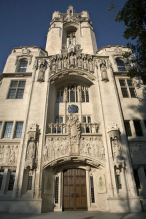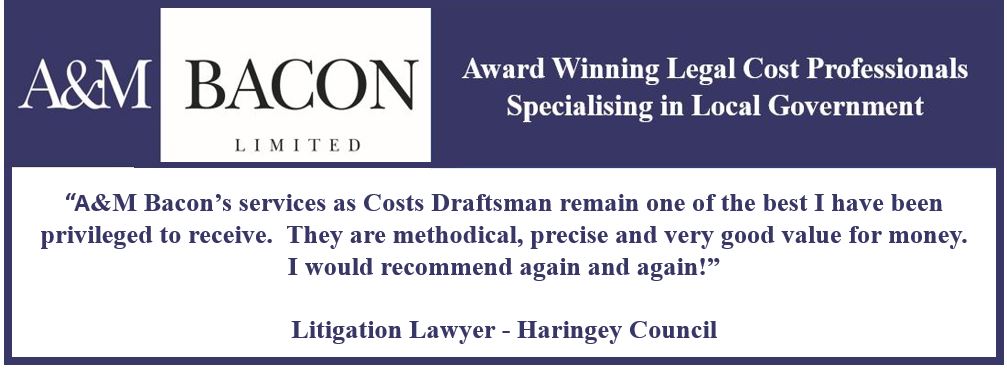Proof of fraud and unravelling settlements
 The Supreme Court has ruled that proof of fraud previously suspected can unravel the finality of a settlement. David Williams, Andrew Parker and Catherine Burt analyse the judgment.
The Supreme Court has ruled that proof of fraud previously suspected can unravel the finality of a settlement. David Williams, Andrew Parker and Catherine Burt analyse the judgment.
The question of whether post-settlement evidence may be used to recover the ill-gotten gains of a fraudulent claimant was considered by the Supreme Court in Zurich Insurance Company plc v Colin Hayward. Thejudgment in favour of Zurich, represented by DAC Beachcroft Claims Limited, is described by Lord Toulson as 'important both as a matter of law and for its practical consequences for insurers and dishonest claimants'. In a welcome boost for counter fraud initiatives, the consequence is that a claim which is fraudulently exaggerated can still be re-opened when evidence comes to light after the settlement.
The original claim reopened
Hayward suffered back injuries in his workplace and presented a claim valued in excess of £400,000. Despite concerns over the honesty of the claim and obtaining surveillance evidence, Zurich was unable to secure conclusive proof that the claim was exaggerated. Themedical experts on both sides were persuaded by Hayward that he had suffered significant injuries and as a result, the claim was settled in 2003 for £134,973.11.
Although Zurich was suspicious about the level of disability presented by Hayward, it had no clear evidence of exaggeration; this position changed shortly after the settlement, when Hayward's next-door neighbours came forward and provided evidence of his pre-settlement abilities. Zurich commenced a claim to recover the damages paid to which Hayward was not entitled. Following an unsuccessful attempt by Hayward to hide behind the settlement agreement and to strike out the claim, the Court of Appeal allowed the argument to proceed to trial. In November 2012 HHJ Moloney QC assessed the award to which Hayward was properly entitled at just £14,720, leaving him to repay the balance.
The current appeal
Hayward appealed to the Court of Appeal, who decided in March 2015 that, as Zurich did not believe the extent of injuries presented by Hayward to be true, it was prevented from unravelling the settlement even on obtaining conclusive evidence to support its suspicions. Lord Justice Briggs held that it was contrary to the public interest to allow a contract of settlement, entered into when aware of the possibility of fraud, to be set aside when evidence of that fraud came to light.
The Supreme Court was required to consider whether, in seeking to set aside a compromise on the basis of fraudulent misrepresentation, Zurich must prove that it was induced into settlement because it believed that the misrepresentations were true (a high hurdle to overcome), or whether it was sufficient to prove that the misrepresentations were a material cause of Zurich entering into the settlement.
In contrast with the judgment in Versloot Dredging BV & Anor v. HDI Gerling Industrie Versicherung AG & Ors [see DAC Beachcroft alert Gilding the Lily 21/7/16], in Hayward the claim was fraudulently exaggerated and presented in order to seek damages to which the claimant was not entitled rather than a 'justified claim supported by collateral lies'.
The Court's unanimous decision of 27 July 2016, set out in the judgments of Lord Clarke and Lord Toulson, was that belief in the misrepresentation need not be established. The risk of Hayward's misrepresentations being accepted by the judge assessing his damages was a material factor in leading Zurich to settle the claim for a value higher than its true value; therefore the misrepresentation was a material cause of the settlement. The judgments confirm that it is difficult for the fraudster to rebut the presumption that a fraudulent misrepresentation is material in such circumstances, Lord Clarke noting with approval Baroness Hale's observation in Sharland v Sharland that "a party who has practised deception with a view to a particular end, which has been attained by it, cannot be allowed to deny its materiality or that it actually played a causative part in inducement."
Whilst Zurich had investigated the claim presented, and sought surveillance evidence, taking those steps did not provide evidence of the fraud, nor should it prevent Zurich from unravelling the settlement when evidence of the fraud was subsequently provided.
Settle or run to trial?
In reinstating the judgment of HHJ Moloney QC, Lord Toulson considered the question of whether there should be any distinction between setting aside a settlement and allowing (following Summers v Fairclough) a judgment at trial to be reopened on receipt of evidence of fraud. He was particularly dismissive of the arguments put forward by Hayward in this respect:
It does not lie in his mouth in those circumstances to say that (Zurich) should have taken the case to trial, and it would not accord with justice or public policy for the law to put the insurers in a worse position as regards setting aside the settlement than they would have been in, if the case had proceeded to trial and had been decided in accordance with the corrupted medical evidence as it then was.
This judgment is of importance to insurers and defendants who are faced with a third party claim they view as suspicious but on which they cannot obtain cogent evidence of fraud. Settlement of the claim pre-trial will not prevent the settlement from being reopened when evidence of the fraud subsequently comes to light.
Comment
With the introduction of the duty of the Courts to strike out fundamentally dishonest claims (s.57 Criminal Justice and Courts Act 2015, Insurance Adviser Alert A Fundamental Change for Dishonest Claimants), the position of personal injury claimants who commit fraud is now more closely aligned to that of dishonest policyholders. In that context, it is worth revisiting the words of Lord Toulson in the Versloot judgment:
"Lord Sumption…identifies and explains the important difference between a fraudulently exaggerated claim and a justified claim supported by collateral lies. In the case of the former, he notes that the court declines to sever the dishonest part of the claim…The reason for adopting a strict approach is one of deterrence. In the case of the latter, Lord Sumption observes that the insured is trying to obtain no more than his legal entitlement, and the lie is irrelevant to the existence or amount of that entitlement. As he succinctly puts it, the lie is dishonest but the claim is not. Lord Sumption expresses the view, with which I agree, that the immateriality of the lie to the claim makes it not just possible but appropriate to distinguish this from the former case, and that a policy of deterrence does not go so far as to justify the denial of a valid claim by reason of a collateral lie."
The guiding principle in the two judgments of Versloot and Zurich is whether the lie was material or not. In that respect Section 57 may even leave the dishonest personal injury claimant more disadvantaged: the section provides that if the claimant has been fundamentally dishonest "in relation to the claim", the court must dismiss the claim in its entirety (unless the court is satisfied that the claimant would suffer substantial injustice). The risk that any lie about the claim may bring down the whole claim is one which no genuine claimant should want (or need) to take.
David Williams, Andrew Parker and Catherine Burt are partners at DAC Beachcroft. David can be contacted on 0113 251 4844 or This email address is being protected from spambots. You need JavaScript enabled to view it..



